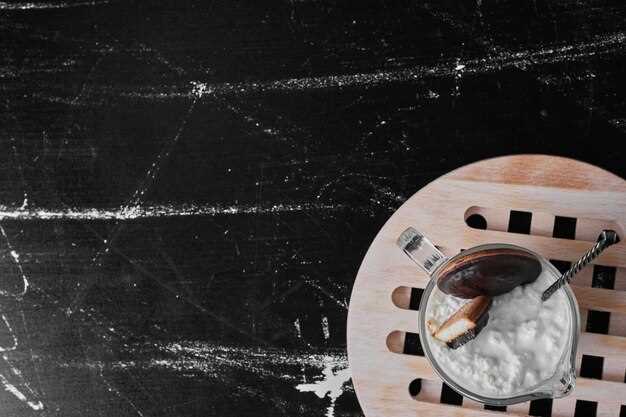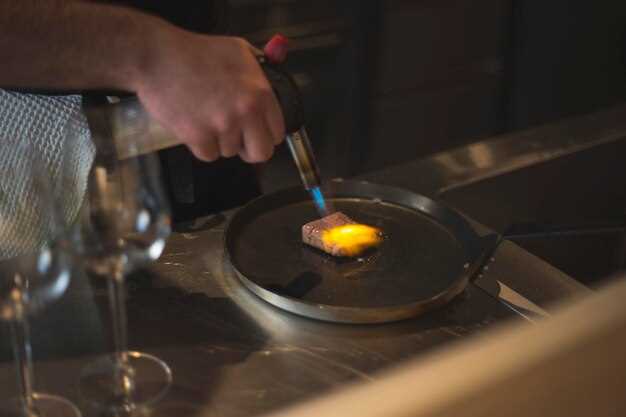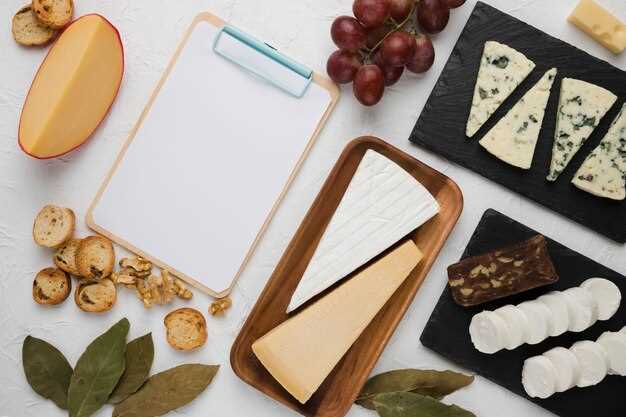Perfecting a soufflé requires both precision and patience. To achieve the ideal rise and lightness, begin by meticulously separating your eggs. Use three large, fresh eggs and ensure no yolk blemishes the whites. Room temperature ingredients significantly improve the volume of whipped egg whites, lending them superb stability during baking.
Choosing the right cheese is key to a savory soufflé. Opt for a well-aged Gruyere, which not only melts smoothly but also adds a rich, nutty flavor to the dish. Grate 50 grams of this cheese finely to ensure even distribution throughout the mixture. In contrast, for a sweet soufflé, fresh vanilla bean seeds elevate the aroma and create a harmonious flavor profile with the eggs.
The preparation of the béchamel sauce forms the backbone of any soufflé recipe. Use 30 grams of butter, melted before blending with an equal amount of sifted flour. Cook until a pale golden paste forms, then slowly whisk in 250 milliliters of warmed milk. Consistency matters here; aim for a thick but smooth sauce, free from lumps.
Another nuance lies in timing. Soufflé requires immediate and careful baking once prepared. Preheat your oven to 190°C, and avoid opening it until the soufflé reaches its peak. This impeccable timing will reward you with a perfectly risen masterpiece, ready to impress any guest.
Understanding the Base Ingredients

Begin with the freshest eggs you can find. Fresh eggs provide better structure due to their more resilient proteins. Prior to using them, separate the whites from the yolks, ensuring no yolk contaminates the whites, which could hinder their ability to whip to stiff peaks.
Cream of tartar is an effective stabilizer for egg whites. Add a small pinch as you start whipping the whites. This acidic powder helps maintain the volume by lowering the pH of the mixture, allowing for a more stable foam.
Next, select a high-quality chocolate or other flavoring ingredient. If choosing chocolate, use finely chopped dark chocolate with at least 70% cocoa content. This provides a rich and intense flavor that pairs beautifully with the lightness of the soufflé.
Do not overlook the importance of butter for greasing the soufflé molds. Generously butter the sides of the mold using upward strokes to encourage the soufflé to rise evenly. Adding a dusting of sugar not only helps with release but also forms a delicate crust.
Finally, choose your sugar wisely. For both sweetening and structural purposes, superfine sugar is recommended as it dissolves more quickly and evenly, integrating seamlessly with the beaten egg whites and yolks.
Choosing the Perfect Eggs: Freshness and Temperature
Opt for eggs not older than a week for your soufflé. Check the Julian date stamped on cartons–this three-digit number indicates the packing day of the year. For maximum freshness, aim for numbers close to 365 early in the year or near zero towards the end of the year. Before using, perform a simple water test: submerge the egg in water; fresh eggs will sink and lay flat, while older ones will stand or float.
Temperature plays a critical role in achieving the perfect soufflé. Use room temperature eggs as they whip up to a larger volume, allowing your soufflé to rise impressively. To swiftly bring eggs to room temperature, submerge them in warm water for ten minutes before cracking. This technique ensures a silky, smooth batter and an even rise in the oven. Always crack eggs into a separate bowl to avoid getting any shell fragments or bad eggs into your mixture. By paying attention to these details, you’ll elevate your soufflé to new heights of culinary excellence.
The Role of Sugar: Granulated vs. Caster Sugar
Select caster sugar for your soufflé to achieve a smoother texture and an even rise. Unlike granulated sugar, which has larger crystals, caster sugar dissolves quickly, blending seamlessly into the egg whites and other ingredients. This leads to a more uniform structure and prevents graininess.
- Texture Benefits: The fine crystals of caster sugar help avoid any gritty consistency in your soufflé, offering a silky finish.
- Stability: Caster sugar stabilizes the beaten egg whites by forming a tighter bond with the proteins, ensuring your soufflé holds its shape better.
- Caramelization: While granulated sugar can cause uneven caramelization, caster sugar provides consistent browning owing to its quick dissolution.
If you only have granulated sugar on hand, pulse it in a food processor briefly until finer. This can mimic the effects of caster sugar, allowing you to maintain the desired lightness and texture in your soufflé.
Flavor Enhancers: Extracts and Fresh Ingredients
Start with incorporating high-quality vanilla extract. Its rich, fragrant notes bring a warm depth that elevates the soufflé’s overall taste. Opt for pure vanilla extract instead of imitation to ensure the best flavor profile.
Next, consider zesting citrus fruits like lemon or orange. The essential oils in the zest provide an invigorating aroma and contrast beautifully with the soufflé’s sweetness. Grate just the colored outer layer to avoid bitterness from the pith.
Don’t underestimate the impact of fresh herbs. A hint of thyme or rosemary can add a surprising twist, creating a complex yet familiar flavor experience. Chop them finely and blend into the base mixture, allowing every bite to release a subtle herbal essence.
Finally, explore the wonders of natural extracts like almond, peppermint, or even hazelnut. These add a new dimension, offering a unique taste adventure with just a few drops. Adjust the quantity carefully as these can be potent, ensuring they complement rather than overshadow the main notes.
Dairy Choices: Milk, Cream, or Alternatives
For crafting the perfect signature soufflé, whole milk stands as the optimal choice due to its balanced fat content, which ensures a creamy texture without overwhelming richness. However, using heavy cream elevates the soufflé, offering greater decadence and depth of flavor, ideal for dessert variations where indulgence is key.
For those seeking a lighter option or catering to dietary restrictions, consider unsweetened almond milk or oat milk. These alternatives maintain a smooth consistency, albeit with a subtle flavor difference. Almond milk adds a delicate nutty undertone, while oat milk contributes a hint of natural sweetness. When opting for non-dairy substitutes, a tablespoon of cornstarch can enhance the thickening process, ensuring the soufflé maintains its structure.
Always monitor sugar levels when substituting, as some plant-based milks contain added sugars, which can affect the final taste. Prioritize unsweetened variants to control sweetness levels. Finally, if lactose intolerance is a concern, lactose-free whole milk offers the same creamy benefits as regular milk, making it a versatile alternative without compromising flavor.
Mastering the Soufflé Technique

Separate the egg whites and yolks with precision; even a small amount of yolk can prevent whites from achieving full volume. Whip egg whites to firm peaks, ensuring they are glossy and hold their shape without being dry.
- Use room temperature eggs for better volume when whipping.
- Add a pinch of cream of tartar to stabilize the egg whites.
Mix the base thoroughly with the yolks before incorporating the whipped egg whites. Gently fold the whites into the base in batches to maintain the airy structure.
- Begin by folding a small portion of whites to lighten the base.
- Incorporate remaining whites with gentle movements to avoid deflation.
Preheat your oven and use a baking sheet to help distribute heat evenly. Resist the urge to open the oven door during baking as this can cause the soufflé to collapse.
- Place the soufflé on the lowest oven rack for rising space.
- Ensure the oven shelf is stable to prevent jostling.
Serve immediately to enjoy its full, delicate texture while its height and lightness are at their peak.
Whipping Egg Whites: Consistency and Technique
Use fresh, chilled eggs for the best results. Ensure your mixing bowl and whisk are completely clean and dry; any fat or oil residue can prevent optimal aeration of the egg whites.
Begin whisking the egg whites at a low speed. This ensures smaller, more stable bubbles, creating a strong foam. Gradually increase the speed as the egg whites start to foam. Stop when you achieve soft or stiff peaks, depending on your recipe’s requirements.
Avoid overwhipping as it can result in a gritty texture. To test for soft peaks, lift the whisk: the egg whites should form peaks that slightly droop over. For stiff peaks, they should stand straight with no droop. Understanding these subtle differences is key to mastering soufflé.
| Consistency | Characteristics | Best Use |
|---|---|---|
| Foamy | Large bubbles, no peak | Initial mixing stages |
| Soft Peaks | Soft, curl over peaks | Mousses, soufflés |
| Stiff Peaks | Firm, standing peaks | Merengues, pavlovas |
Folding Method: Achieving the Right Texture
Use a large spatula to gently fold the beaten egg whites into the soufflé base. Start by adding a third of the egg whites to lighten the mixture. Slide the spatula down the side of the bowl, scoop from the bottom, and turn the mixture over with a smooth motion. Rotate the bowl with each fold, maintaining airiness without deflating the mixture. It’s crucial to fold slowly and patiently, ensuring consistency and a light texture.
When folding, avoid stirring or pressing down on the batter. This action releases the trapped air bubbles, essential for the soufflé’s rise. Instead, gently incorporate the egg whites in sections until you achieve a uniform mixture with no visible streaks. If the base appears too stiff, more gentle folds can help it blend evenly. This careful technique results in an airy and perfectly textured soufflé. Achieving this balance requires practice but results in a delicate, fluffy masterpiece.
Oven Temperature and Timing: Critical Factors
Set your oven to exactly 375°F (190°C) for perfect soufflé rise. Consistency in temperature is key; use an oven thermometer to verify, as built-in gauges can be inaccurate. Bake for 25-30 minutes, avoiding any door opening to prevent collapse. Timing is precise–underbake and it’s too moist; overbake and it dries out.
For even baking, position your dish in the middle of the oven. This ensures an even heat distribution, essential for the soufflé to rise uniformly. Consider rotating your soufflé halfway through the cooking time, but only if your oven has noticeable hot spots.
| Oven Position | Temperature | Timing |
|---|---|---|
| Middle Rack | 375°F (190°C) | 25-30 minutes |
To know if it’s done, observe the surface: a properly set top should be golden brown and slightly firm to the touch. A quick, gentle wiggle of the dish can also help; a slight jiggle at the center is perfect. Let your soufflé rest for a minute after removing it from the oven, but serve immediately for the best texture and flavor.
Baking Vessels: Materials and Sizes
Choose a ceramic or metal ramekin with an ideal capacity of 6 to 8 ounces for a single serving soufflé. Ceramic retains heat evenly, ensuring a consistent rise, while metal heats up faster, providing a crustier exterior. Consider your preference for texture when selecting materials.
Opt for straight-sided containers to encourage a uniform rise. The vertical walls ensure that the soufflé climbs evenly, achieving that perfect puff. Selecting ramekins with larger diameters can result in shorter soufflés with more surface area for browning, offering a delightful contrast between the crust and the fluffy interior.
- 6-ounce ramekin: Best for individual servings; allows for sufficient puff and elegant presentation.
- 8-ounce ramekin: Offers more indulgence per serving while maintaining the classic soufflé structure.
- Ceramic: Provides even heat distribution and traditional aesthetic; perfect for delicate, evenly cooked soufflés.
- Metal: Encourages a cispier crust with its quick heating properties; ideal for those who enjoy a bit of crunch.
Avoid using glass, as it doesn’t conduct heat effectively, which can lead to uneven cooking. Always fill the vessels to about three-quarters full to allow enough room for the rise without risking overflow. Proper vessel choice is crucial in achieving the iconic soufflé lift and texture.
Q&A:
What makes a soufflé rise so perfectly in this recipe?
The recipe attributes the perfect rise to carefully beaten egg whites, which are gently folded into the base mixture. This careful folding traps air bubbles, giving the soufflé its signature lift and airy texture.
Can I prepare the soufflé mixture in advance?
It’s best to prepare the soufflé base in advance if needed, but the egg whites should be beaten and folded in right before baking to ensure the best rise and texture. Leaving the mixture to sit after adding the egg whites may result in a less impressive souffle.
What is the most challenging part of making this soufflé?
The trickiest part of making this soufflé is achieving the perfect consistency when beating the egg whites and then folding them into the base. Overbeating or underbeating the egg whites, as well as improper folding, can lead to a flat and dense result.
Is it possible to add any unique flavors to this recipe?
The recipe welcomes experimentation with flavors. Vanilla, chocolate, or fruit purees can be incorporated into the base for a twist on the classic. Just ensure any added ingredients are properly balanced to maintain the soufflé’s texture and rise.
What type of dish is recommended for baking the soufflé?
A well-buttered ramekin is the dish of choice for baking this soufflé. The straight sides of a ramekin help the soufflé climb as it bakes, resulting in an elegantly risen and well-structured final dish.



